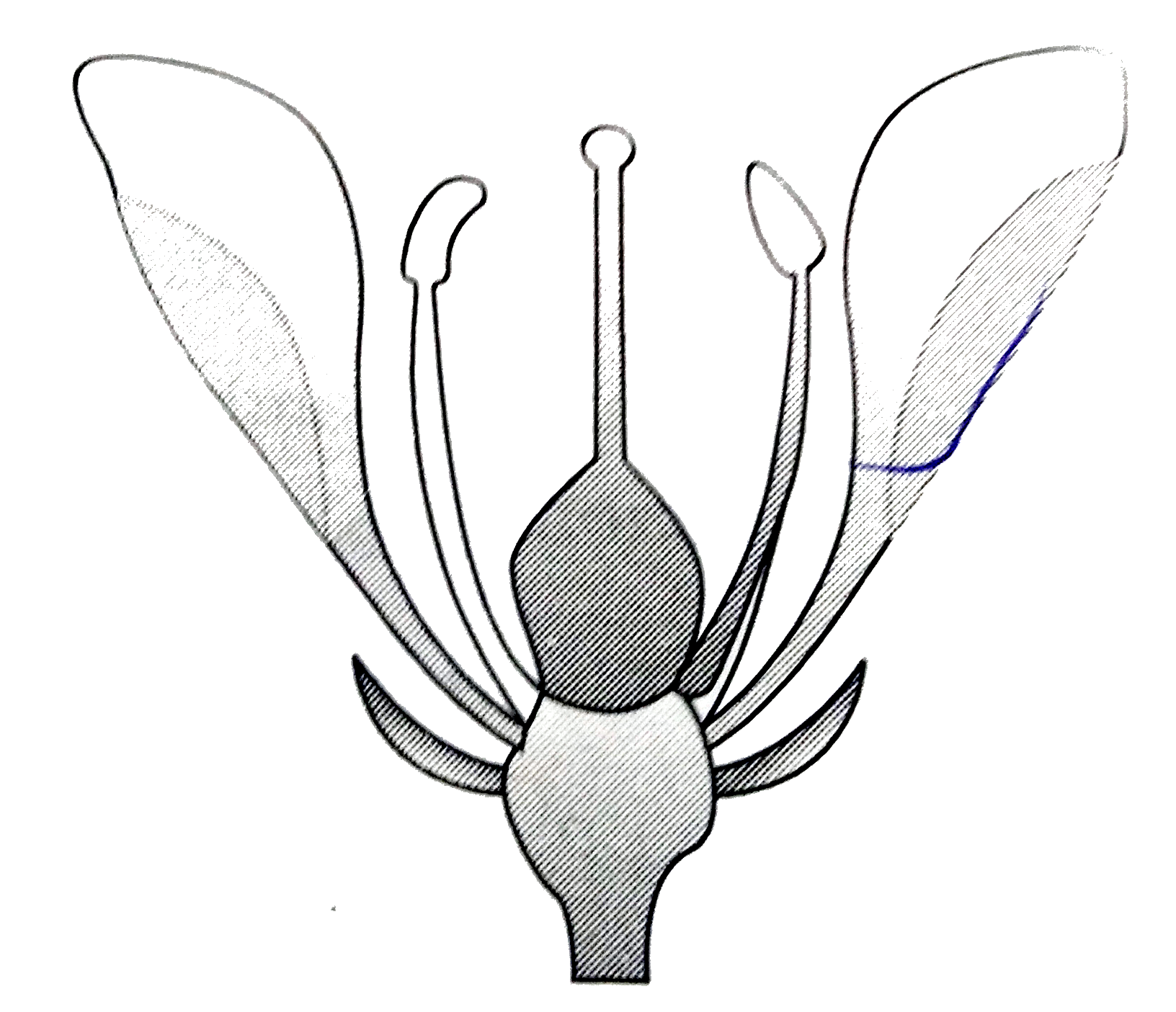Flowers are trimerous and hypogynous in family Papilionaceae.
Step-by-Step Solution:
1. Understanding the Terms:
- The term "trimerous" refers to flowers that have parts in multiples of three, such as three petals, three sepals, etc.
- "Hypogynous" refers to the position of the ovary being superior, meaning that the ovary is located above the other floral parts (like petals and sepals).
2. Identifying the Family:
- The question states that the flowers are from the family Papilionaceae, which is also known as Fabaceae (the legume family).
3. Analyzing the Flower Structure:
- In the Fabaceae family, flowers typically exhibit a pentamerous structure, meaning they usually have five petals rather than three. This is a key point to note.
4. Evaluating the Statement:
- The statement claims that flowers in the Papilionaceae family are trimerous (three petals) and hypogynous (superior ovary).
- While it is correct that the ovary is superior (hypogynous), the claim that the flowers are trimerous is incorrect.
5. Conclusion:
- Therefore, the statement is false. Flowers in the Papilionaceae family are not trimerous; they are typically pentamerous, even though they do have a superior ovary.
Final Answer:
The statement is false. Flowers in the Papilionaceae family are pentamerous and hypogynous.
---
- The term "trimerous" refers to flowers that have parts in multiples of three, such as three petals, three sepals, etc.
- "Hypogynous" refers to the position of the ovary being superior, meaning that the ovary is located above the other floral parts (like petals and sepals).
- The question states that the flowers are from the family Papilionaceae, which is also known as Fabaceae (the legume family).
- In the Fabaceae family, flowers typically exhibit a pentamerous structure, meaning they usually have five petals rather than three. This is a key point to note.
- The statement claims that flowers in the Papilionaceae family are trimerous (three petals) and hypogynous (superior ovary).
- While it is correct that the ovary is superior (hypogynous), the claim that the flowers are trimerous is incorrect.
- Therefore, the statement is false. Flowers in the Papilionaceae family are not trimerous; they are typically pentamerous, even though they do have a superior ovary.
The statement is false. Flowers in the Papilionaceae family are pentamerous and hypogynous.
Topper's Solved these Questions
- MORPHOLOGY OF FLOWERING PLANTS BOOK - MODERN PUBLICATIONCHAPTER - MORPHOLOGY OF FLOWERING PLANTS EXERCISE - QUICK MEMORY TEST ( COMPLETE THE MISSING LINKS )
20 Videos
- MORPHOLOGY OF FLOWERING PLANTS BOOK - MODERN PUBLICATIONCHAPTER - MORPHOLOGY OF FLOWERING PLANTS EXERCISE - QUICK MEMORY TEST (C. CHOOSE THE CORRECT ALTERNATIVE )
6 Videos
- MORPHOLOGY OF FLOWERING PLANTS BOOK - MODERN PUBLICATIONCHAPTER - MORPHOLOGY OF FLOWERING PLANTS EXERCISE - HIGHER ORDER THINKING SKILL (LONG ANSWER QUESTIONS )
6 Videos
- MINERAL NUTRITION BOOK - MODERN PUBLICATIONCHAPTER - MINERAL NUTRITION EXERCISE - CHAPTER PRACTICE TEST
16 Videos
- NEURAL CONTROL AND COORDINATIONBOOK - MODERN PUBLICATIONCHAPTER - NEURAL CONTROL AND COORDINATIONEXERCISE - Chapter Practice Test
11 Videos
Similar Questions
Knowledge Check
Assertion. Flowers are trimerous in family Solanaceae.
Reason. Stamens are three in number and carpels are six in number.AIf both Assertion and Reason are true and the Reason is a correct explanation of the Assertion.BIf both Assertion and Reason are true but Reason is not a correct explanation of the Assertion.CIf Assertion is true but the Reason is false.DIf both Assertion and Reason are false.Flowers are always wind pollinated in family:
ACompositaeBBrassicaceaeCSolanaceaeDPoaceaeFlowers are always wind pollinated in family:
ACompositaeBBrassicaceaeCSolanaceaeDPoaceae
Describe the corolla in family Fabaceae (Papilionaceae).
View SolutionOdd sepal is anterior in Papilionaceae.
View SolutionBased on the position of floral parts on thalamus, the flowers, are described as hypogynous, perigynous and epigynous. Which of the following floral forms (A-D) represents the flowers of Rosa and Prunus respectively ?

View SolutionBased on the position of calyx, corolla and androecium in respect of the ovary on thalamus, the flowers are described as hypogynous, perigynous and epigynous. The following conditions is found in

View SolutionRead the following statements and find out the incorrect statement.
a. Mustard has hypogynous, actinomorphic flower, parietal placentation, syncarpous gynoecium and belongs to family Brassicaceae
b. China rose has superior ovary, twisted aestivation, monodephous stamens and axile placentation
c. Pea has bilateral symmetry, vexillary aestivation, diadelphous stamens, marginal placentation and belongs to family fabaceae
d. Chilli has radial symmetry, epipetalous stamen, swollen placenta, monocarpellary gynoecium and belongs to family solanaceae
e. Lily has actinomorphic flower, axile placentation, imbricate aestivation, tricarpellary and trilocular gynoeciom belonging to family liliaceae.
View Solution
